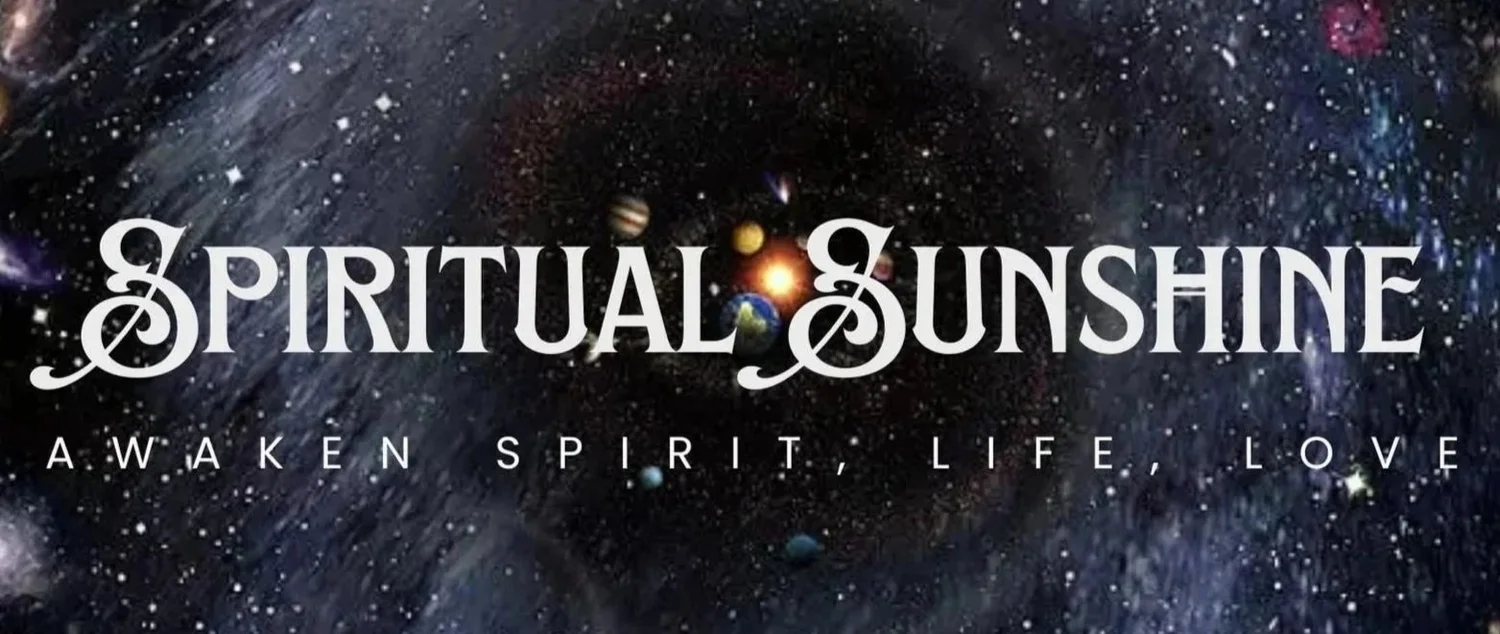
Read Our Written Sermons
grounded in a mystical, interfaith-Christianity inspired by Emanuel Swedenborg

Find Everlasting Peace in the River of Life Within
Thoughts are like the ripples on the surface of a river, just transient glimmers of awareness – hinting at the depths below. For whatever reasons, we have come to identify so much with our habitual ripples we miss the enormity of the river of life within – taking its vast depth, clarity, and peace to be a pit of emptiness as we fearfully try to color over it. When we turn more toward that river of life at our core by letting the ripples pass us by, dipping into the vastness of awareness with meditative and prayerful practice, we find that we become cleansed and renewed in its flowing holy water. In the book of Revelation, “the river of the water of life” is described as flowing from God into the centre of the heavenly city – I think inviting us as we read it to turn toward that river of the water of life flowing at our own heavenly centre, amidst the garden of all our gifts and expressions of life in their diversity.

Know ThySELF
The notion that we must die to ourselves “in order to live” is a striking one, uplifted by many Buddhist and Hindu Jnanis, as well as Christ. The idea might seem a bit negatively self-destructive at first, and yet many of us have probably noted that living primarily for our lower self is the truly destructive force in the world! The practical element of this wise request seems to be for us to watch our minds, letting go of desires and selfish thoughts as they come up, allowing our unity with God to shine through in the peace and intrinsic love within. This “brings us alive” and “wakes us up,” keeping us vigilant to the will of God(dess) and letting us finally know our true eternal selves – without the shackles and blinders of yearning, fear, false identities, and aversion.

We Are the I Am
It may seem a little self-indulgent to assume that we are one with the great “I AM” (as God calls herself in the Hebrew Bible), but in practice, I think the realization that we are one with the One can be quite the opposite – opening us up to compassion, clarity of awareness, and our deep connection with others. From a mystical viewpoint we are all one in God, all one in awareness and life itself, no matter our differences of tradition and culture. We can lean into this understanding of reality by taking the time to meditate or pray on this fundamental truth between all of us – that we are, that “I AM,” for a few moments letting go of all else. In this state, we can find renewal and uncover a peace that some might call, the Prince of Peace.
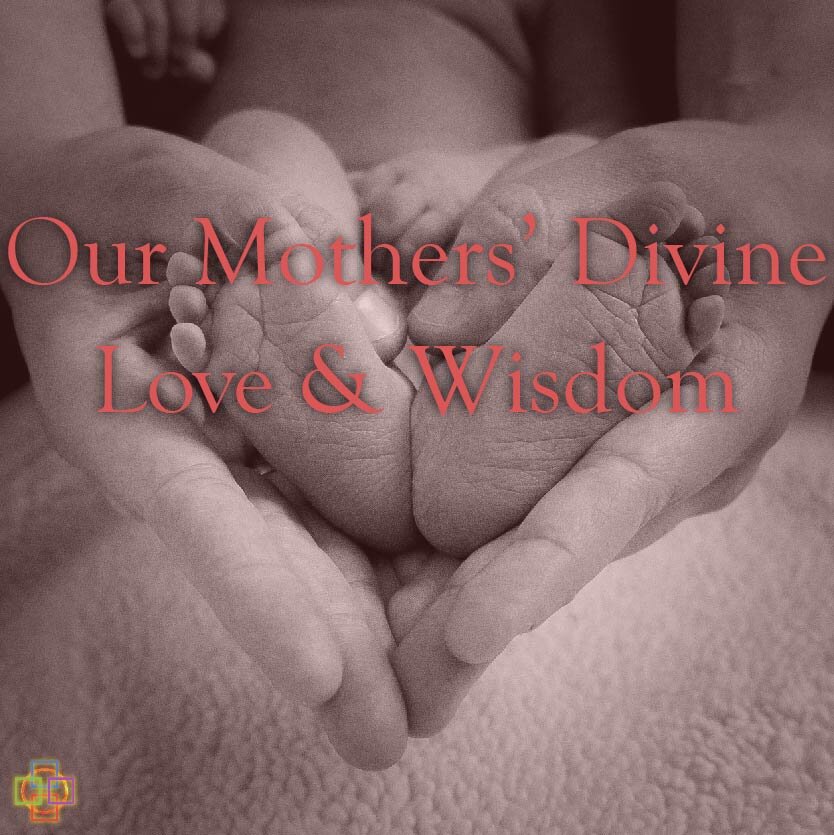
Our Mothers’ Divine Love & Wisdom
In general, our mothers envelop us in their love and wisdom as we grow, just as we’re sustained and developed within them as embryos. Similarly, we are said to be growing within God as we receive more of her Divine Love and Wisdom! This same Divinity is the source of all the greatness and care in our mothers. Indeed, the case can easily be made that our mothers tend to be the most potent and obvious image and likeness of God that we encounter in our earthly lives – except perhaps for the Divine Mother known by many names that we find within. Like a child in the womb, we are enveloped within God’s Divine light of awareness and we receive our own light from it, what the mystic Swedenborg describes as the spiritual sunshine of Divine Love and Wisdom and the source of our very being. Today let’s celebrate the reality of being held and developed in the wise and caring arms of God, known by many names, and rejoice in all the ways she shines – especially through our mothers and within ourselves.

We’re All One in God, Especially in Our Diversity
The oneness of humanity is a theme hinted at or exclaimed by many traditions and ancient scriptures, and I think leaning into this awareness can serve as a healing salve for our minds and our world. However, why do so many traditions use different terms or explanations for how we are one, or ignore this often-scriptural concept entirely? What’s the fundamental similarity and is it similar enough to be called the same thing? And finally, is there something fundamental at the core of our beings that unites us even in, especially in, our diversity?
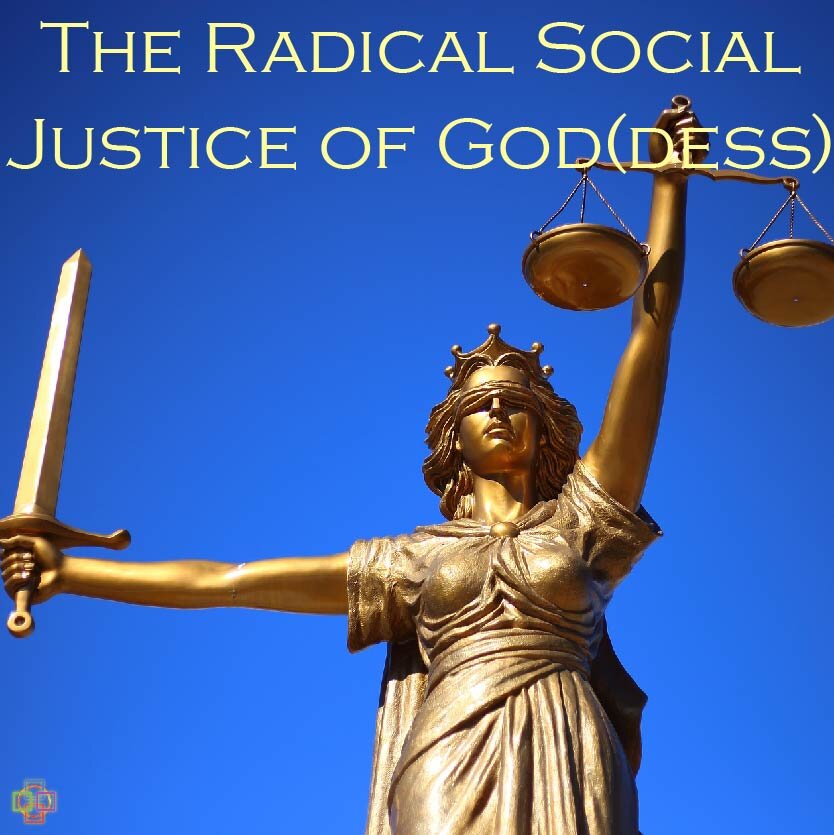
The Radical Social Justice of God(dess)
The image of the bloody, fiery God from Revelation 19 can be a bit shocking at first. Why is the social justice and love wielding Christ so horrific in this vision, and why does it say, “He has a name written on him that no one knows but he himself?” We find that although the Lord focuses on compassionate awareness and care, he doesn’t shy away from emphasizing the bloody and hurtful injustices in the world. And although the Biblical scriptures highlight that this is the glorified Jesus, it also doesn’t shy away from emphasizing that the Lord radically transcends any one tradition, name, gender, or creed – but can yield her spiritual-political sword in each of our hearts, no matter our spirituality.

Find Blessings in Intrinsic Awareness
Blessings in life abound, but it can be difficult to perceive them when we’re too caught up in self-awareness instead of selfless awareness. Selfless awareness is less “humbling one’s self” than it is realizing that our identifications with our perceived intelligence, our bodies, and our circumstances are a lie we’ve been telling ourselves. Instead, as some Buddhists, Hindus, and Christians believe, we should identify more with the eternally peaceful awareness that shines light into our minds as it observes our thoughts, pervades all sentient life, and underlies the energy within all matter. As we find that we are not our rambling minds, selfish ideas, and worries, we can start to truly see the blessing of every moment and settle into the blessedness of Goddess-given awareness.
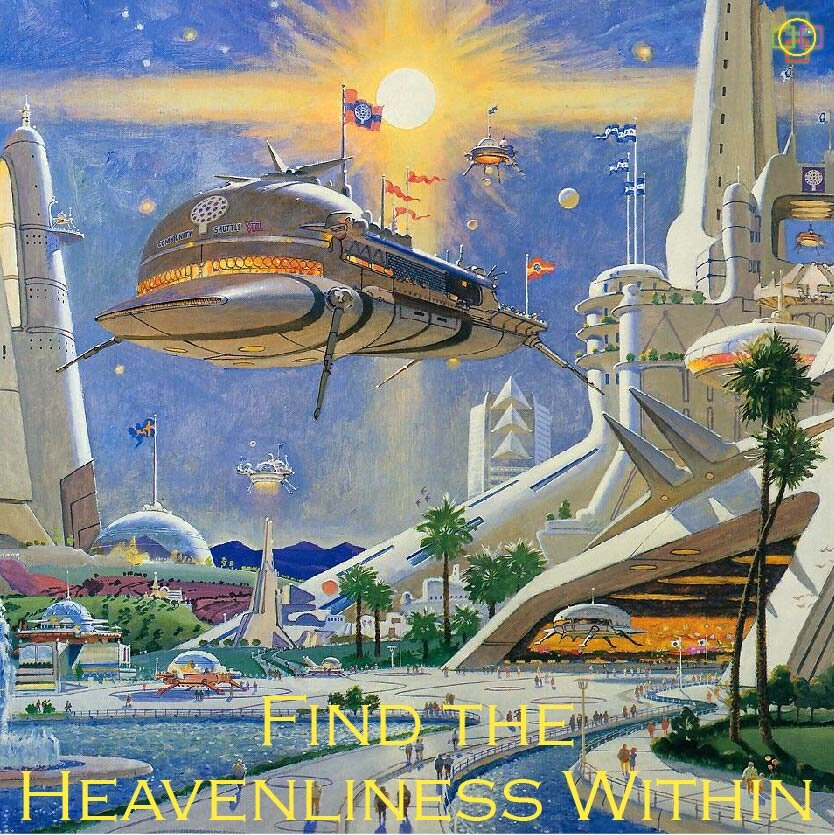
Find the Heavenliness Within
We’re told that any journeying to God(dess) or God’s journeying toward us is just a metaphor since there’s no true distance between us and that Holy One that transcends any religion. But I think both are helpful parables as they describe how we often feel and other truths of the process toward wholeness and peace. Indeed, it seems to us that we have to work at finding peace within, even though it’s already there at the root of our consciousness. And it also feels like we must often wait for God to act, for that descending holy city to get mysteriously closer before a new stage of compassionate awareness and flow reaches us (or perhaps we’re not sure what will come!). However, we’re told that sometimes the most effective way of journeying to God is to journey within into a state of sabbath or rest (whatever we may be doing). This means resting in the peaceful, spacious consciousness that we use to observe our mind’s chatter and all the things that we perceive through it, letting go of identifying with our lusts, attachments, perceptions of our bodies, or random thoughts. Interestingly, our favorite mystic, Emanuel Swedenborg, believed that the Palm Sunday image of the Lord riding on a donkey represented our natural mind subordinating itself to our spiritual awareness, similarly to this.
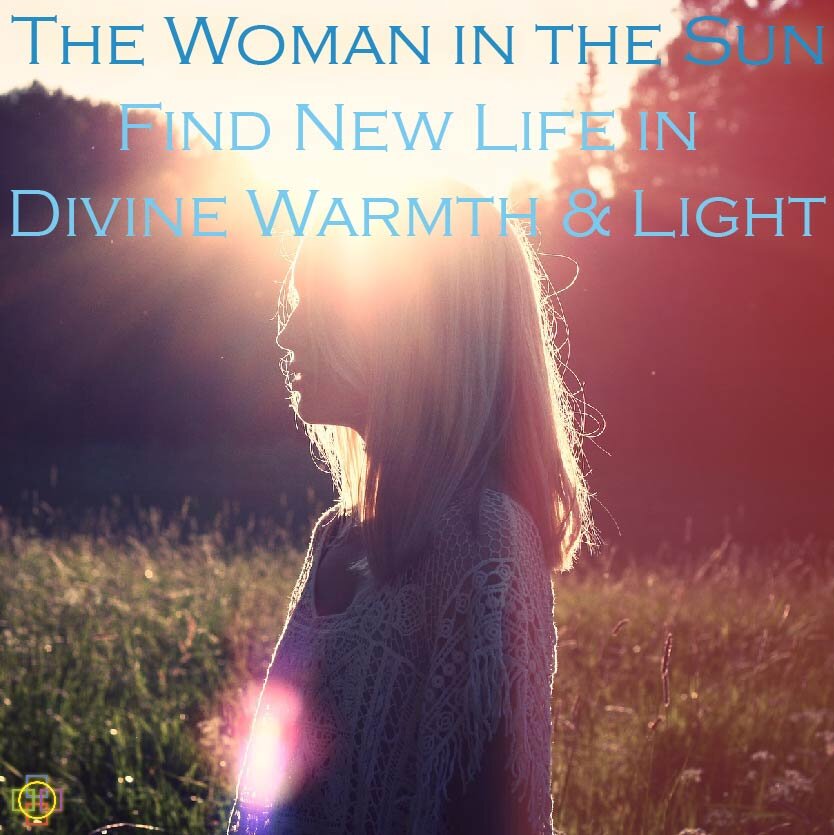
The Woman Clothed in the Sun: Find New Life in Divine Warmth & Light
Sometimes it feels like we’ve been left out to dry. We feel exposed and let down, vulnerable, depressed, and undersupported. And unfortunately, often we are undersupported and underappreciated – on an earthly level. But funny enough, as we lean into the compassionate warmth and the enlightening truth of God in our lives, we can find that we feel spiritually protected, cared for, and more and more mentally sound, even amidst great trials. Further, as we lean into care, oneness in God, and compassion, we’ll find that we ourselves are able to better support and appreciate those around us – while empowering that in others.
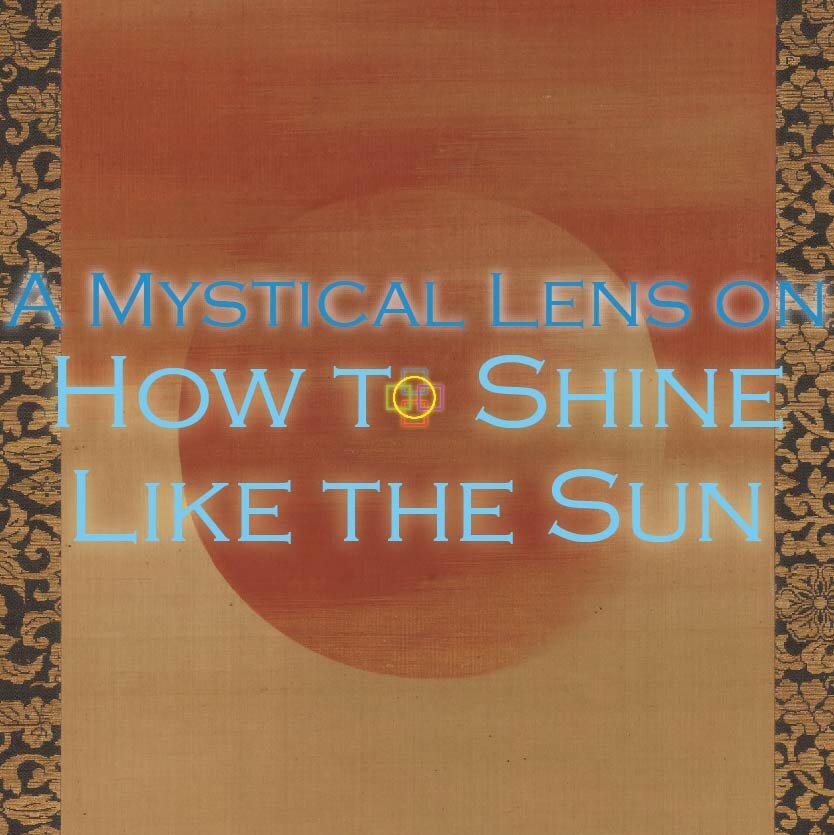
How to Shine Like the Sun
The ancient Tao Te Ching states, “The Master keeps her mind always at one with the Tao, that is what gives her her radiance.” We see an important example of one who becomes one with the Tao, the uncreated life force that gives rise to everything, in Christ – who not only says as much throughout the gospel, “I and the Father are one,” but who also literally shines like the sun when his inner self is revealed. Further, we as living beings are also invited through many traditions to become a shining one at one with the Tao, one with the Master, the Buddha, with the Christ who is one with the Father. But we might ask, “The Tao is dark and unfathomable, how can it make her radiant? Because she lets it.”

Release Your Imprisonment
We can all feel trapped at times, whether due to a pandemic, a work environment, a relationship, or an internal oppression or depression; most of us know something about feelings of imprisonment. Our society is slowly coming around to inviting more tools to help us through these situations and moments. And yet there’s an exceedingly long way to go and many improvements we can make to better enable and empower people – from promoting more effective psychological and spiritual tools to just becoming more aware of the unrightfully oppressive natures of our economic, social, and justice systems. In a way, we can see an embodiment of our collective oppression in the “least of these:” the disregard and unrehabilitative attitudes we hold for the truly imprisoned, which are often the poor and the disempowered.

Romantic Awareness
I think we can often find the essence of Divinity, no matter our belief tradition, in our romantic and loving relationships – although sometimes we can allow our yearning for love or sexual connection to bring us out of the moment and away from healthy connection. Indeed, many ancient spiritual teachings (including many Tantras) encourage us to engage with life itself, our every moment, with present, loving engagement, for our own spiritual health and the health of our families. Coming into the moment and letting go of distracted thinking, yearning, and worries, allows us to be present to our loved ones and ourselves in new and surprising ways, as it also helps us to heal our hearts and minds in loving connection with the spiritual light and warmth of God, known by many names.

Don’t Worry, Enter the Moment
The idea that we should “stop and smell the roses” is an ancient and popularly expressed one, and yet, it can be incredibly difficult to take it to heart! Many of our religions and spiritualities tell us this in a variety of commanding and detailed ways – expressing how we should rely on God(dess) and our own God-given present awareness to navigate our days and not get ahead of ourselves. But how can we lean into this state of mind when there’s so much to plan and do, and is it actually worth striving to follow such a radical approach to life? Well, to start to answer this we must ask ourselves, “do I enjoy being anxious and yearning for the future, or would I rather find peace and a sense of wholeness today?”

How “40” Represents Temptation and Illuminates the Bible
There’s an interconnectedness in scripture that is often lost to us when we read it purely literally, a tendency of both Hebrew and Christian bibles to use recurring images and symbols to point to deeper spiritual truth. This multilayered structure is often made plain by the gospels themselves, but in our desire to use scripture for our own purposes and avoid personal reflection we never seek these threads nor see where they lead. One example of these spiritual symbols is the number 40 (which I mention regularly), often used to describe a state of temptation in scripture, just as Christ is said to have spent 40 days in the wilderness overcoming three key temptations from the Devil.

Why Does Divinity Insist That It Takes a Process?
The process of spiritual transformation takes time and patience, as they say, “Rome wasn’t built in a day.” But often our spiritual teachers tell us that the infinite Divinity that we each express in our own finite way has always existed, and so why does our reception of it seem to take so long? Why does becoming our “best self” tend to be riddled with setbacks, process, and seeming disappointments on both individual and societal scales? Well, we’re also told that the Divine One is a God of process – and that this allows for our freewill and deep engagement of compassion, social justice, and wisdom from a place of individualized love and acceptance. Indeed, we read that even “Jeh-with-us,” Jesus, underwent his own process of growth in the Christian gospels, which helped him “fulfill all righteousness,” and we discover similar stories in many of the world’s scriptures revealing how God works and helps us to work as well.

Reclaiming Christianity & Our Ancient Traditions
There’s a deep, living tradition within our scriptures themselves. One that speaks to love and a transformation of heart and action, even if the text itself is sometimes weighed down by its characters’ bad habits and hurtful decisions. This is similar to the slow awakening of today’s modern acceptance of cultural and identity diversity, which corresponds to a reawakening of the heart of many of our major traditions in the minds of young and old alike. This spirit of Christ doesn’t accept the moneychangers in the temple, or the dominating Pharisees in society, and points out that “Christian” and “religious” count for more than we’ve cast onto them. Like Christ, these should point to love for everyone, deepening our understanding of reality, and opening our hearts to the diverse wellspring of God within and around us under many guises.

The Transcendent Joy of the Holidays
Christmas and the holidays are an interesting time of year because no matter how seemingly nonreligious we become in Western society, we still love celebrating it and getting festive! I think this is because no matter our beliefs, there’s something compelling about the joy of the season, about the joy that comes when families connect, when we dress and celebrate festively, when we collectively listen to songs and messages about communal love, joy, and hope, and when we take some time away from the hubbub of life, focus on giving to the oppressed and our loved ones, and rest a bit in (relative) peace. We like to forget, but this is the type of joyous living that God encourages us to find throughout our traditions and specifically in the Christian Bible, and so perhaps there’s a lesson for us in the holidays that we can carry forward through the rest of the year.

Why Are There No More “Major” Miracles? Love
I find it interesting that despite the miracles found throughout holy texts, most of us don’t seem to see many miracles today (besides those “normal” ones of life itself!). If we look seriously at the spiritual insights that our scriptures try to present metaphorically (the reason why they’re often carried as communal parables), and particularly, at what kind of miracles these texts are trying to encourage, I think we might discover why there’s such a disparity! In short, I think it is the rootedness of miracles in love that helps explain what we might see as a lack of modern “major” miracles, similar to what the 18th-century interfaith-Christian mystic, Emanuel Swedenborg, proposed.

Be Still Within as Justice Advents Through You
There’s an empowering, interreligious message at the centre of our Moses tale today, and also one that is repeatedly uplifted by Jesus Christ in the gospels: “be still,” “accept peace,” “quiet your mind and know God.” Any practicing Buddhist or Christian Monk will tell you that this is at the heart of how Divine Awareness deeply advents into our minds, and yet, when we read scripture, we often miss this deep, central vein. Further, the concept of being still and tapping into our deeper, silent awareness, can often be misconstrued as being inactive (perhaps due to the seeming remoteness of monks!) where the opposite is the case; this inner stillness allows us to respond to the world with clarity, uplifting within and around us the Divine activities of compassion and social justice that are at the root of all life.
